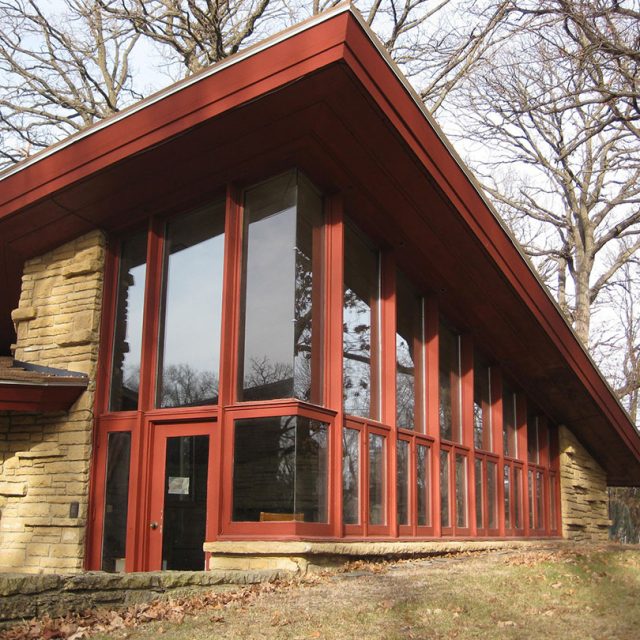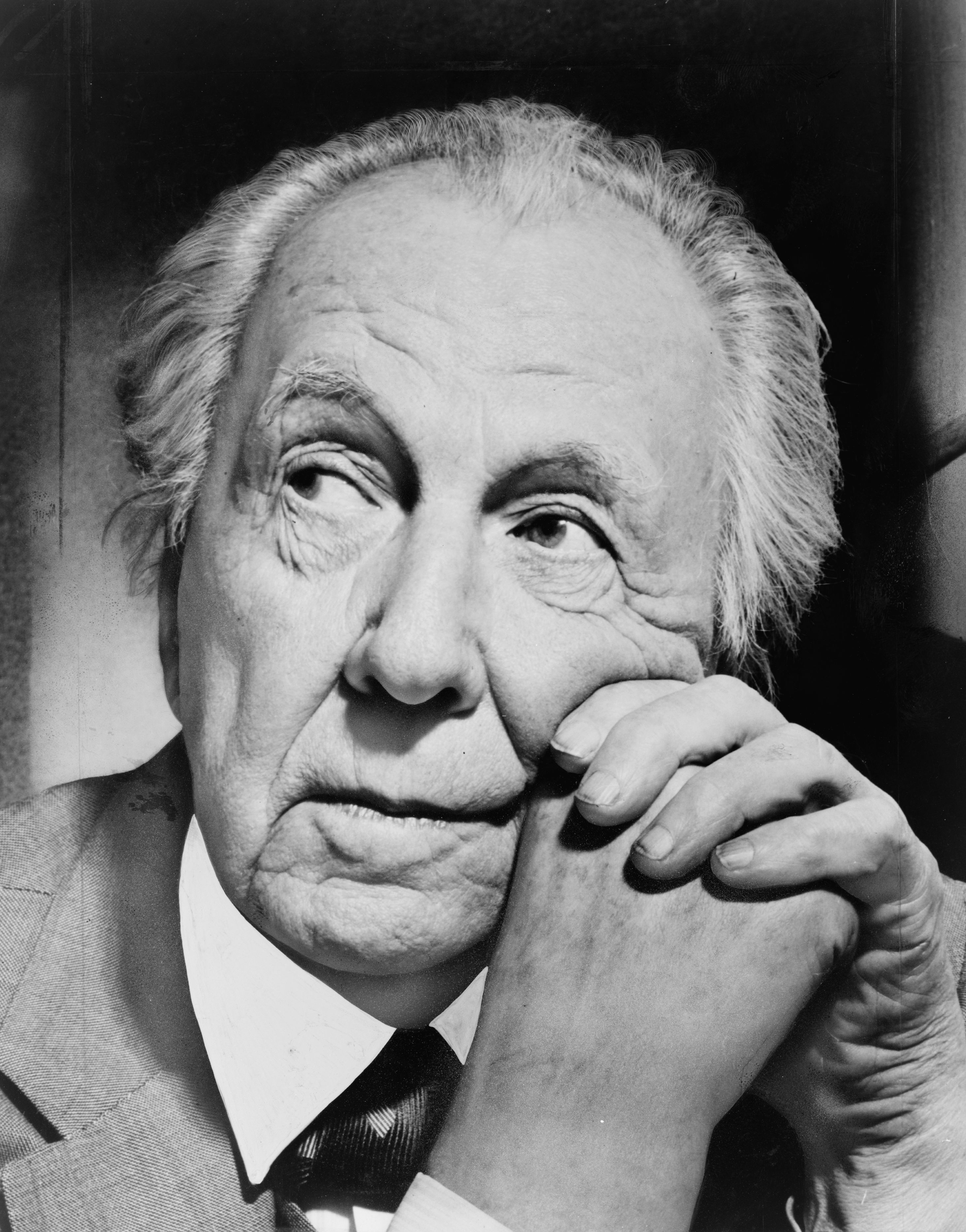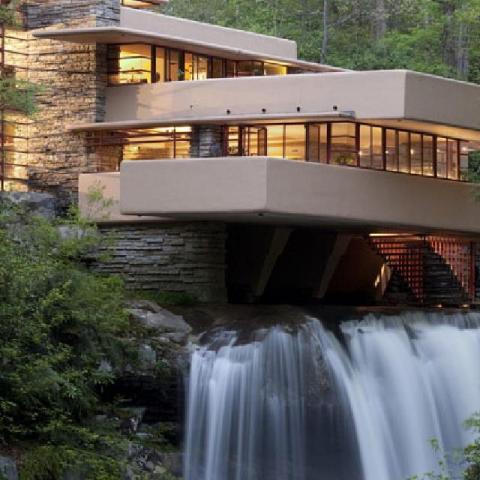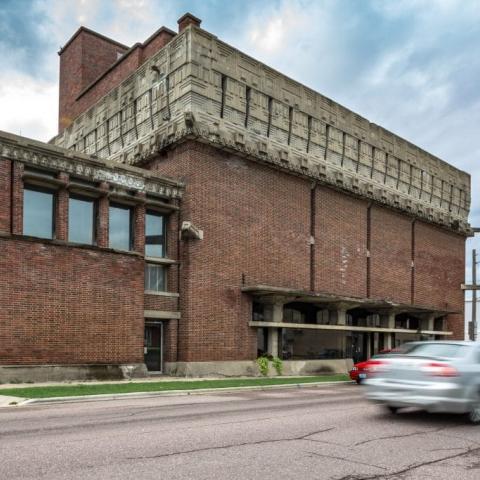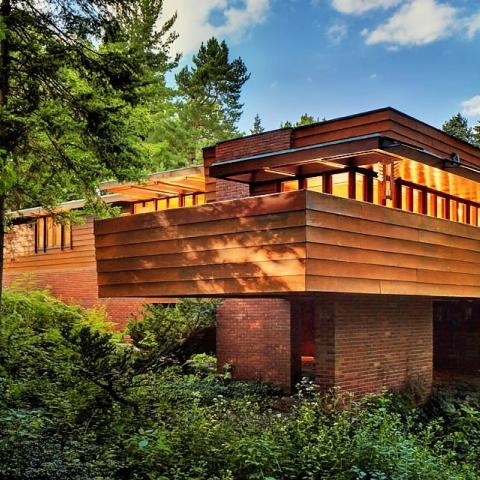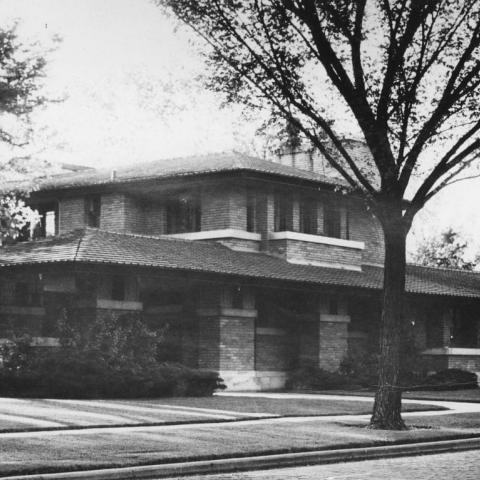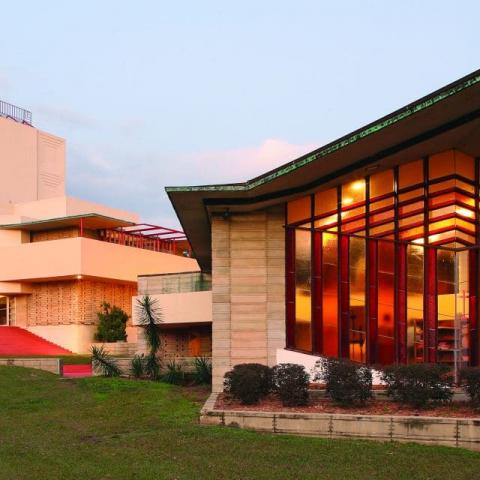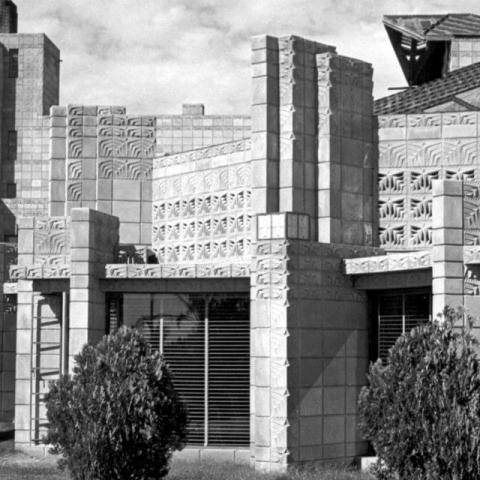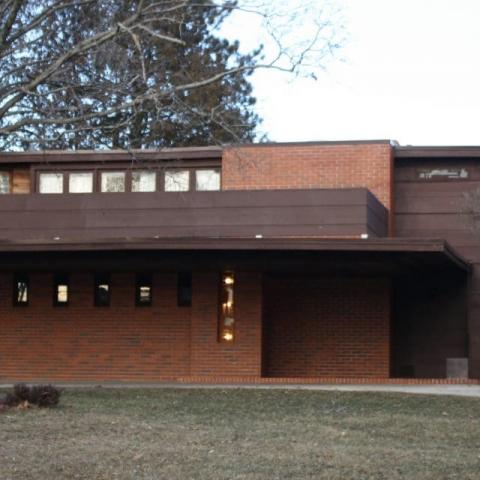Frank Lloyd Wright
“The mission of an architect is to help people understand how to make life more beautiful, the world a better one for living in, and to give reason, rhyme, and meaning to life.”
– FRANK LLOYD WRIGHT, 1957
Ask the average citizen to name a famous American architect and you can bet that their answer will be Frank Lloyd Wright. Wright gained such cultural primacy for good reason: he changed the way we build and live. Designing 1,114 architectural works of all types — 532 of which were realized — he created some of the most innovative spaces in the United States. With a career that spanned seven decades before his death in 1959, Wright’s visionary work cemented his place as the American Institute of Architects’ “greatest American architect of all time.”
Frank Lloyd Wright was born in Richland Center, Wis., on June 8, 1867, the son of William Carey Wright, a preacher and a musician, and Anna Lloyd Jones, a teacher whose large Welsh family had settled the valley area near Spring Green, Wisconsin.
...
To help support the family, 18-year-old Frank Lloyd Wright worked for the dean of the University of Wisconsin’s department of engineering while also studying at the university. But, he knew he wanted to be an architect. In 1887, he left Madison for Chicago, where he found work with two different firms before being hired by the prestigious partnership of Adler and Sullivan, working directly under Louis Sullivan for six years.
FRANK LLOYD WRIGHT’S WORK
Over the course of his 70-year career, Wright became one of the most prolific, unorthodox and controversial masters of 20th-century architecture, creating no less than twelve of the Architectural Record’s hundred most important buildings of the century. Realizing the first truly American architecture, Frank Lloyd Wright’s houses, offices, churches, schools, skyscrapers, hotels and museums stand as testament to someone whose unwavering belief in his own convictions changed both his profession and his country.
Style & Design
Wright’s style and design changed as he responded to the needs of American society
Prairie Style
Wright’s work from 1899 to 1910 belongs to what became known as the “Prairie Style.” With the “Prairie house”— a long, low, open plan structure that eschewed the typical high, straight-sided box in order to emphasize the horizontal line of the prairie and domesticity— Wright established the first truly American architecture. In a Prairie house, “the essential nature of the box could be eliminated,” Wright explained. Interior walls were minimized to emphasize openness and community. “The relationship of inhabitants to the outside became more intimate; landscape and building became one, more harmonious; and instead of a separate thing set up independently of landscape and site, the building with landscape and site became inevitably one.”
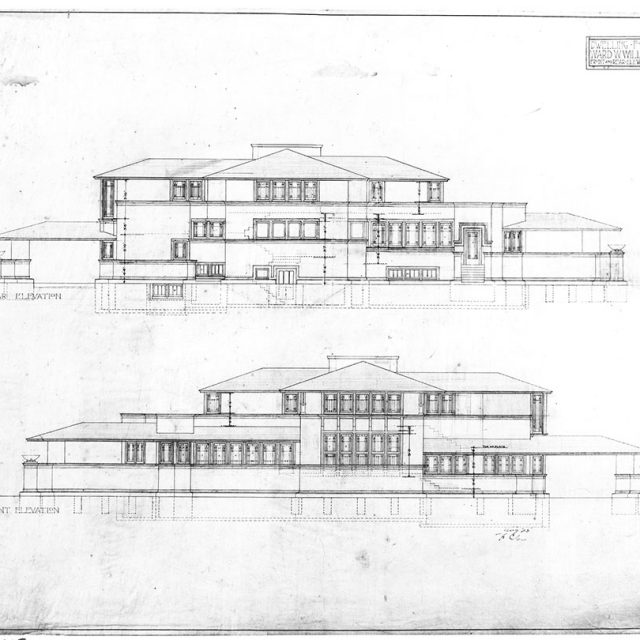
Usonian
Responding to the financial crisis of 1929 and ensuing Great Depression that gripped the United States and the rest of the world, Wright began working on affordable housing, which developed into the Usonian house. Wright’s Usonians were a simplified approach to residential construction that reflected both economic realities and changing social trends. In the Usonian houses, Wright was offering a simplified, but beautiful environment for living that Americans could both afford and enjoy. Wright would continue to design Usonian houses for the rest of career, with variations reflecting the diverse client budgets.
